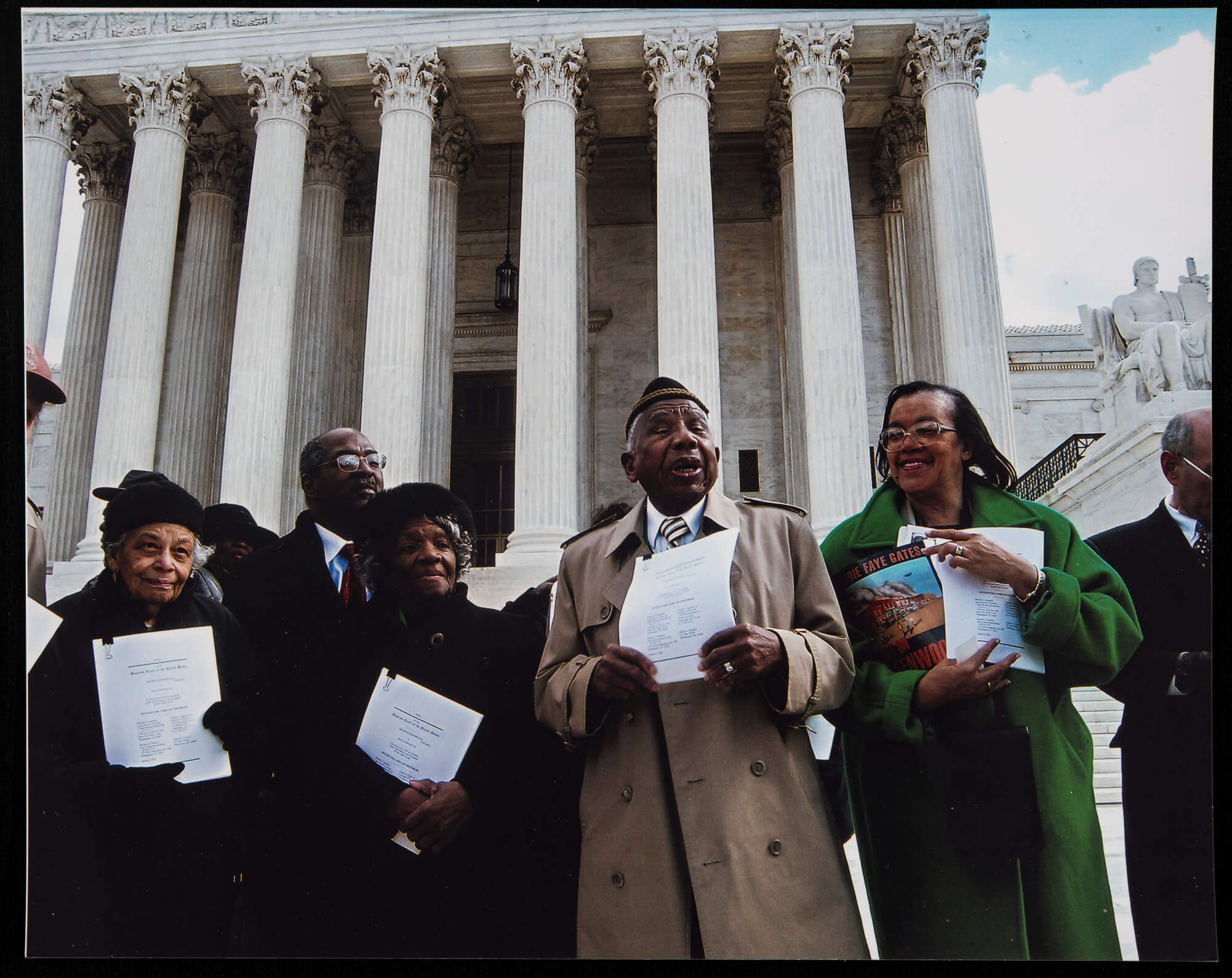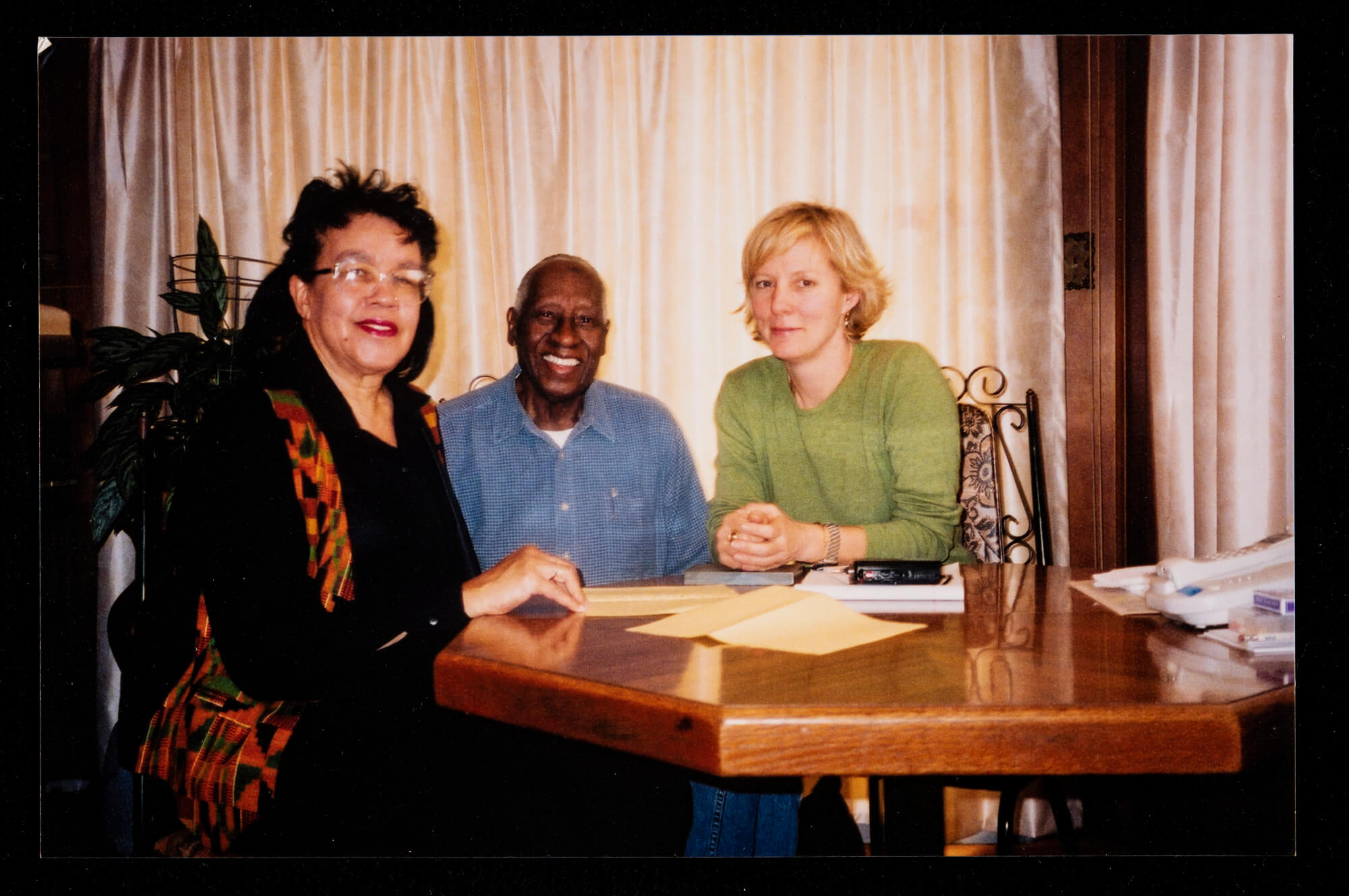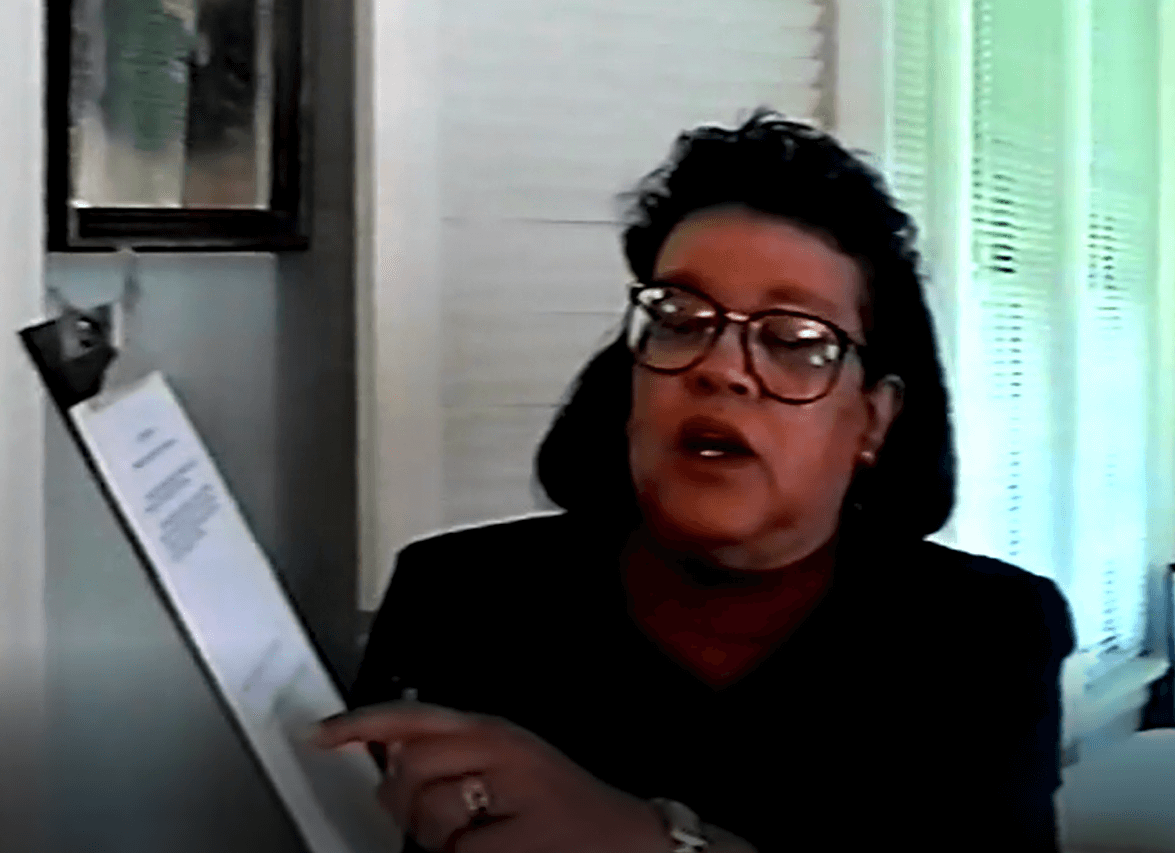Learning Objectives
- Students will define oral history
- Students will learn ways the historian Eddie Faye Gates and the Oklahoma Commission worked to uncover accounts of the Tulsa Race Massacre
- Students will listen and examine oral history accounts from Tulsa Race Massacre survivors
Guiding Questions
How do oral histories help us understand the past?
Companion Collections
Background and preparations
Preparation for Complicated Conversations
Students in this lesson will listen to accounts from survivors of the Tulsa Race Massacre. Teachers should prepare their classrooms by creating a comfortable environment for difficult conversations. The following strategies and practices help teachers prepare their classroom environment for young students.
Before beginning the lessons, teachers should consider their own comfort levels in facilitating difficult conversations. Young students will have many questions about events and terminology. Being prepared for such questions is imperative. Teachers can also establish norms for discussion by using sentence stems.
Examples: I when I think about ___________________, I feel _________________.
I feel _________________, because _______________________.
During the lesson, teachers should manage the emotions of students by checking in with them and giving them space to express their thoughts and feelings. Teachers can allow time for students to journal, draw, and ask questions.
Following the lesson, students need to process and reflect on the conversations. Teachers are encouraged to use the extension activities to help students process the lesson further. Lastly, teachers can use online resources to help build community and foster healthy, yet difficult conversations.
A Change in Nomenclature from Riot to Massacre
Some students may have heard the terms “riot” and “massacre” before the lesson. Teachers are encouraged to be prepared to explain the difference in the two terms. Also, teachers should be able to explain why an official shift was made to use the term “massacre”.
The term “riot” implies that two sides were at fault and/or that a spontaneous large fight grew out of control. Soon after the Tulsa Race Massacre, insurance companies used the term “race riot” to avoid paying the Greenwood community for damages. In 2018, the Oklahoma Commision to Study the Race Riot of 1921 formally shifted to the term “race massacre”.
Learning resources and handouts
Oral History of Tulsa Race Massacre Handout
Oral History Graphic Organizer
Video Analysis Handout
Gilcrease Museum Collection Connections
Eddie Faye Gates Collection Videos:
Video 1: Vernice Dunn Simms 5327.1686_clip1
Video 2: Ernestine Gibbs 5327.1686_clip2
Eddie Faye Gates Collection Photo: 4327.10991
Activities
Hook: Comparing our Stories
1. Tell students that they will pretend someone wants to know what their class is like. Have students write down on scratch paper everything they saw or did from the beginning of school today until the current class time.
2. Have 3-4 students share their stories with the class.
3. Discuss the similarities and differences between the stories.
4. Write their answers on chart paper, white board, or Smartboard.
Background Information
1. Tell students you will read about how oral history has been important to uncovering the Tulsa Race Massacre.
2. Display photo of Eddie Faye Gates. 4327.10991 Tell students that she is the woman on the left.
3. Read aloud the Oral History of Tulsa Race Massacre.
Video Analysis – 5327.1820
1. Have students watch the following video clips and take notes using the graphic organizer.
*Schedule enough time for students to watch the videos more than once during this lesson. Watch each interview once without pausing. Then rewatch each video, pausing as students fill in the graphic organizer.
2. Video 1: Vernice Dunn Sims 5327.1686_clip1
3. Video 2: Ernestine Gibbs 5327.1686_clip2
4. Have students complete the T-chart comparing and contrasting the stories. graphic organizer
5. Ask: Would someone know what our class is like if they only heard one story? Why or why not? What other clues around the room would help someone get to know our class and what we do? (Example: visual schedules, assignments on the board, books and notebooks on desks, student work hanging up, etc.)
6. Tell students that historians use oral histories to understand what has happened in the past. Oral history can be live or recorded interviews, films, or transcripts (conversations written out) of someone’s memories of the past.
Assessment
Closing Questions
Give students the Video Analysis Handout. Students can answer the questions independently, with a partner, or whole group depending on the needs of your classroom.
1. What details were similar in the two different interviews?
2. Why is it important to listen to more than one account of a historical event?
3. How do these oral histories help historians and the public understand what happened during and after the Tulsa Race Massacre?
Extensions
The Tulsa Historical Society has audio recordings of interviews with Tulsa Race Massacre survivors available. Teachers should listen to the recordings before sharing with students to determine each interview’s appropriateness for their classrooms. The Greenwood Cultural Center has additional resources for teaching oral histories. Lastly, students can interview an adult in their family or at school to learn about something that happened in the past.. Students can record their interviews using online tools such as Flip Grid. Or students can write their interviewees answers and present their interview in class.
Bibliography
“1921 Tulsa Race Massacre.” Tulsa Historical Society & Museum, www.tulsahistory.org/exhibit/1921-tulsa-race-massacre/.
Gates, Eddie Faye. Harvard Black Letter “The Oklahoma Commission to Study The Tulsa Race Riot of 1921 https://harvardblackletter.org/wp-content/uploads/sites/8/2016/10/20-JREJ-83.pdf
Let’s Talk Facilitating Critical Conversations with Students, Learning for Justice, 2019.
Modifications
Teachers can preview the questions on the Video Notes and Graphic Organizer Handout before watching the videos. While watching the videos, pause throughout the videos to give students more time to answer the questions in their notes. Use chart paper to create a T-chart on the board. Have students share a few answers aloud to write on the T-chart. Then have students work together as partners or independently to continue filling in the T-chart.
Content standards
Oklahoma Academic Standards Social Studies Practices
K.3 The student will understand that history relates to events and people of other times and places.
K.3.1 Explain how events of the past may have affected our community and the way we live today.
K.3.2 Explain how we honor people and events of the past.
K.3.3 Use words and phrases related to chronology and time to explain how things change including before/after and yesterday/today/tomorrow.
1.3 The student will examine important events and historical figures in the nation’s past.
1.3.2 Describe the contributions of people and groups who have shaped our history and ways we commemorate important places and events of the past.
1.3.4 Identify primary sources and how they help us to learn about the past.
2.3 The student will examine the lives of notable Americans who expanded peoples’ rights and freedoms through our history.
2.3.1 Analyze the contributions of people and groups who have shaped our history and who are honored by holidays and commemorative months.
2.3.2 Compare perspectives of people in the past to people in the present.
2.3.3 Compare different accounts of the same historical event using primary and secondary sources.
2.3.4 Explain possible reasons for events in the past.



